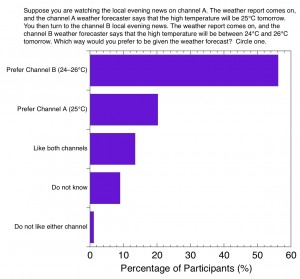The size of figures submitted for peer review
 A common concern when reviewing a manuscript is, “Are the figures going to be legible when published in the journal?” Notice how small and unreadable the figure is above. You can click on it to see it in full size.) As you may know, the digital files for the figures are uploaded to the publishers’ web site and are used in the production of the article. How those files are used in the review process is another matter.
A common concern when reviewing a manuscript is, “Are the figures going to be legible when published in the journal?” Notice how small and unreadable the figure is above. You can click on it to see it in full size.) As you may know, the digital files for the figures are uploaded to the publishers’ web site and are used in the production of the article. How those files are used in the review process is another matter.
In many cases, the author includes the figures in their manuscripts after the text accompanied by the figure captions for the convenience of the reviewers. To most accurately represent how these figures will look in the journal, the author should present these figures either in single-column format or double-column format (depending on the journal, of course).
For single-column figures in American Meteorological Society journals, their width is 7.9 cm. For a double-column figure, the width is 16.5 cm.
These are the dimensions that the figures will appear in the journal, so your submission should be consistent with this size to ensure that the reviewers can determined whether your figures are readable for the audience.



Hi. I agree this an interesting point.
Reviewers’ lives are often made much harder by having low-quality figures to deal with. This can waste everyone’s time (since the reviewer starts to question the figures when they might be ok). Many of us nowadays have fast internet connections: so I’d like to see the journal offices making a low and high quality pdf for use by reviewers (the currently system of a low-quality pdf, with links to each higher-quality figure, is rather cumbersome).
Hi Curtis,
My argument would be that the figures should be readable at the scale they are published in, regardless of whether it is for the reviewer or the reader (after publication). In my experience, high-quality graphics can be incorporated in the reviewer copy of the manuscript. It is not necessarily the publisher’s problem. It is incumbent upon the author to do so.
Often the problem is using a low-quality graphic converter from the original figure to the one in the reviewer’s manuscript. For example, I use a Mac. When I create a figure in Adobe Illustrator then export into jpg, I get a low-quality graphic. If, however, I export as a PDF, load the PDF into GraphicConverter, and convert to jpg, then I get a higher-quality figure.
It is this kind of playing around that authors need to do to ensure that they are providing reviewers with resolution of graphics that is suitable for review AND for publication.
Dave